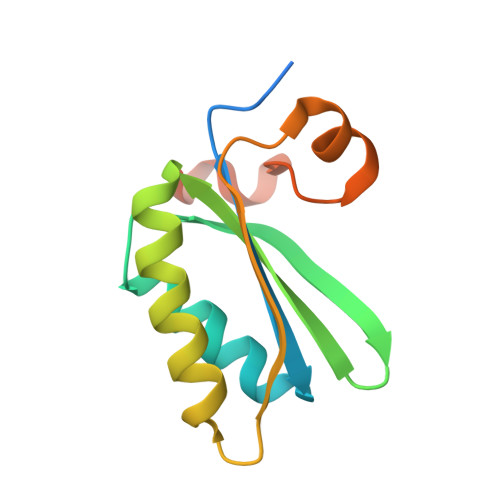Engineering bacterial microcompartment shells: chimeric shell proteins and chimeric carboxysome shells.
Cai, F., Sutter, M., Bernstein, S.L., Kinney, J.N., Kerfeld, C.A.(2015) ACS Synth Biol 4: 444-453
- PubMed: 25117559
- DOI: https://doi.org/10.1021/sb500226j
- Primary Citation of Related Structures:
4OX6, 4OX7, 4OX8 - PubMed Abstract:
Bacterial microcompartments (BMCs) are self-assembling organelles composed entirely of protein. Depending on the enzymes they encapsulate, BMCs function in either inorganic carbon fixation (carboxysomes) or organic carbon utilization (metabolosomes). The hallmark feature of all BMCs is a selectively permeable shell formed by multiple paralogous proteins, each proposed to confer specific flux characteristics. Gene clusters encoding diverse BMCs are distributed broadly across bacterial phyla, providing a rich variety of building blocks with a predicted range of permeability properties. In theory, shell permeability can be engineered by modifying residues flanking the pores (symmetry axes) of hexameric shell proteins or by combining shell proteins from different types of BMCs into chimeric shells. We undertook both approaches to altering shell properties using the carboxysome as a model system. There are two types of carboxysomes, α and β. In both, the predominant shell protein(s) contain a single copy of the BMC domain (pfam00936), but they are significantly different in primary structure. Indeed, phylogenetic analysis shows that the two types of carboxysome shell proteins are more similar to their counterparts in metabolosomes than to each other. We solved high resolution crystal structures of the major shell proteins, CsoS1 and CcmK2, and the presumed minor shell protein CcmK4, representing both types of cyanobacterial carboxysomes and then tested the interchangeability. The in vivo study presented here confirms that both engineering pores to mimic those of other shell proteins and the construction of chimeric shells is feasible.
Organizational Affiliation:
§Physical Biosciences Division, Lawrence Berkeley National Laboratory, Berkeley, California 94720, United States.














